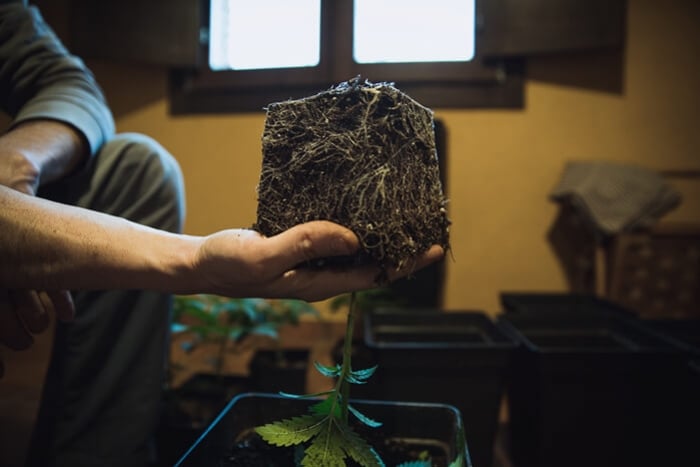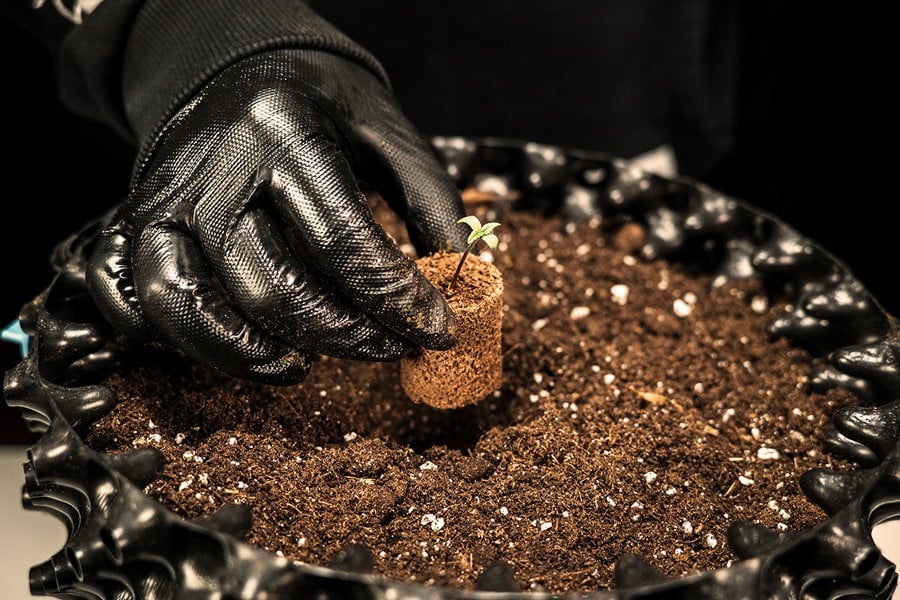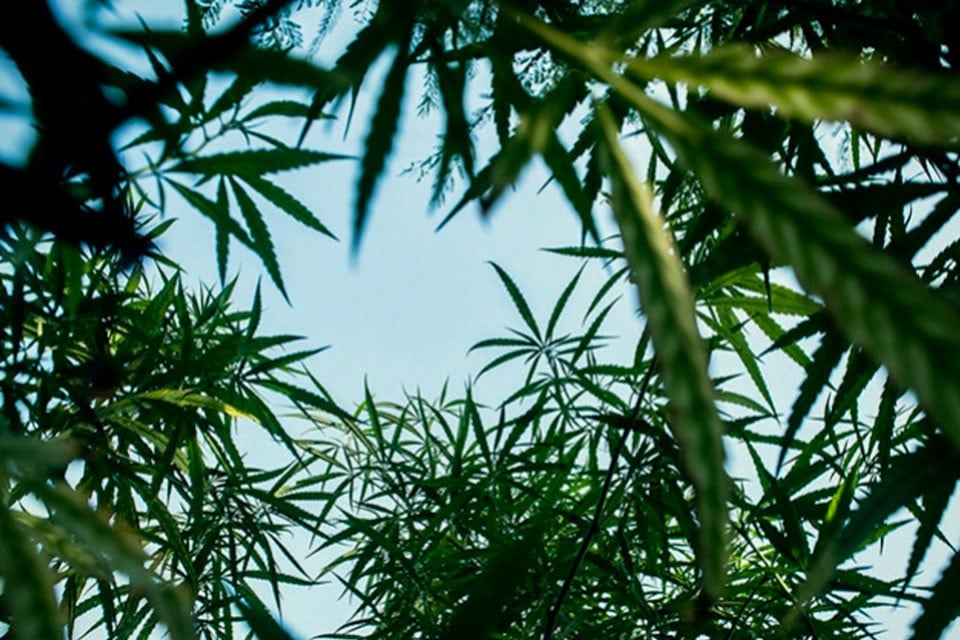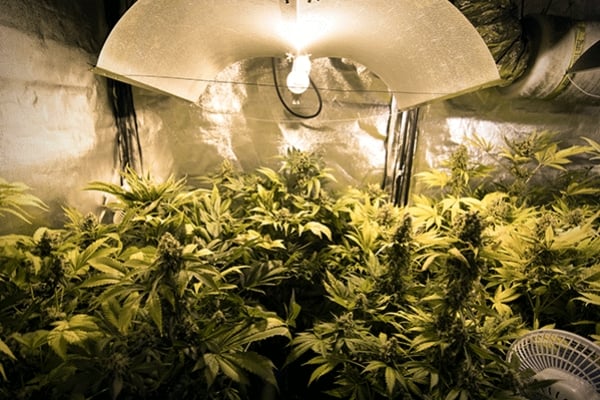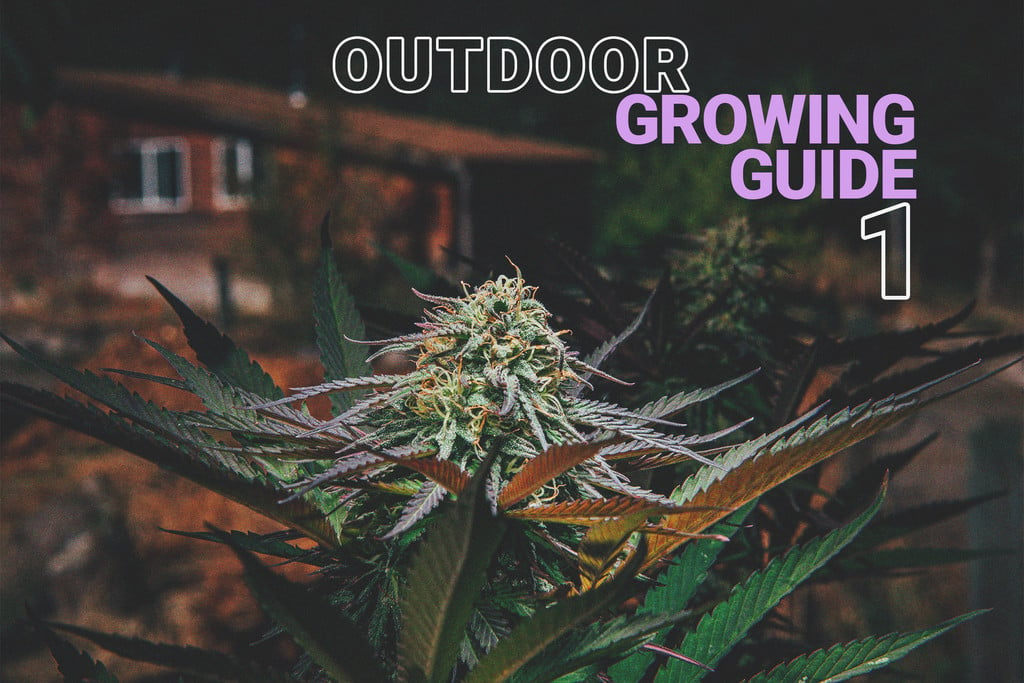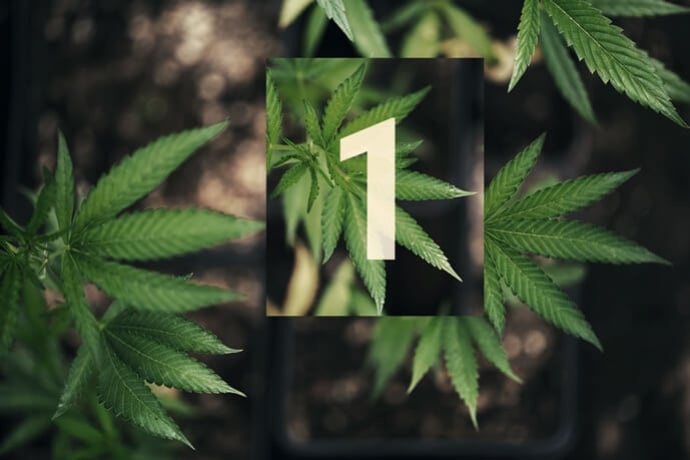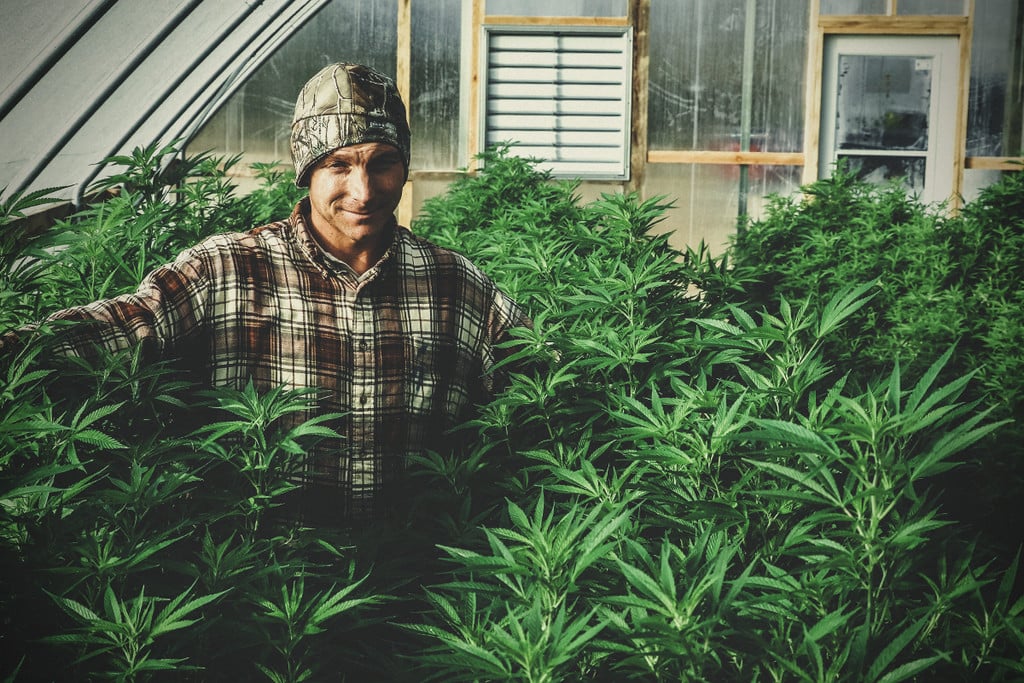.
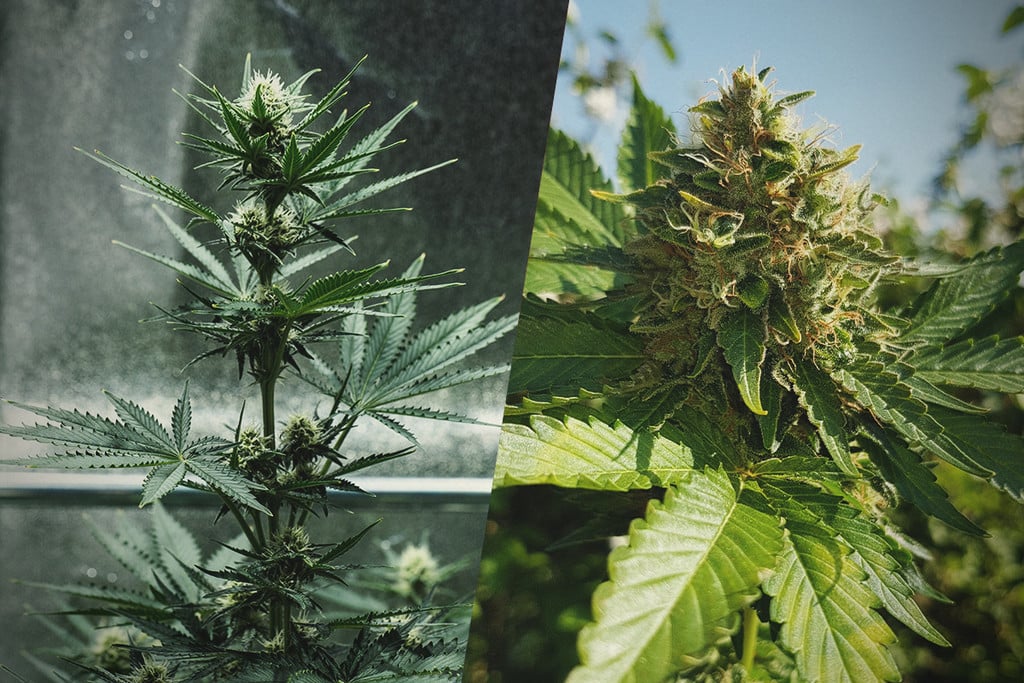
How to Move Your Indoor Cannabis Plants Outdoors
Cannabis can be grown both indoors and outdoors. But what about moving indoor plants outside? Keep reading for an in-depth guide on how to move indoor plants outside, permanently or part-time.
A complete guide to moving indoor cannabis plants outdoors.
While it might sound counterintuitive, many cannabis growers start their plants off indoors and move them outdoors later. In this article, we’ll teach you exactly how to move your indoor plants outdoors, be it permanently or part-time.
Contents:
Why Bother Moving Your Indoor Cannabis Plants Outside?
⏩ For a head start: If you live in an area with a short growing season, starting your plants off indoors is a great way to give them a bit of extra veg time.
🌼 To trigger flowering: Some growers like to veg their plants indoors under an 18/6 light cycle, then move them outdoors to force them to flower.
🏡 For extra space: If you’ve got a crowded grow tent, you might want to move your plants outdoors where they can grow more freely.
🐛 To battle pests: If you’re combating a pest problem, you may want to move your plants outdoors to treat them and disinfect your grow room.
☀️ For better lighting: There’s no grow lamp on the market that can beat natural sunlight. If you find your light is running a little short, you can move your plants outdoors and continue growing them under the sun.
🔧 To deal with technical failures: If your grow equipment breaks down halfway through your grow, you might consider moving your plants outdoors while you fix or replace the broken equipment.
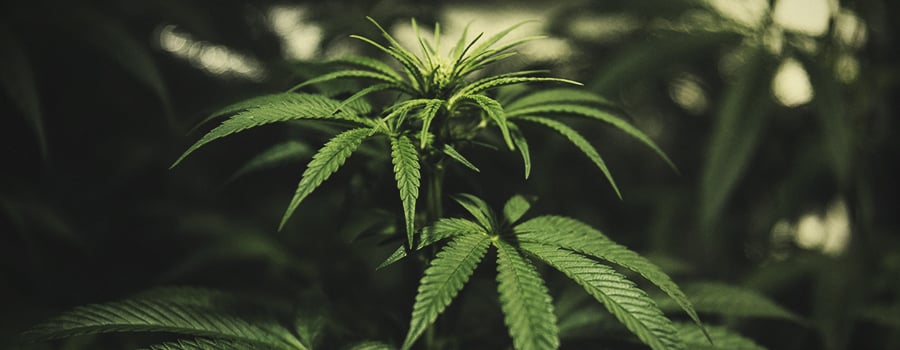
There are countless other scenarios where you might consider moving your plants from an indoor grow room/tent to the outdoors, or vice versa. For instance, if you’re trying to keep your plants from attracting unwanted attention outdoors, you can minimise the amount of time they’re out in the open by keeping them indoors under grow lights during flowering.
If you’re planning to move your indoor plants outdoors, make sure to follow the tips below to avoid stressing them.
When to Move Cannabis Plants Outdoors
If you’re planning on moving your cannabis plants outdoors, it’s important you do so at the right time. Inconsistent light hours can stress your plants, causing them to flower immaturely, revert back to vegetation, or develop other symptoms/problems associated with stress (such as abnormal growth, hermaphroditism, stunted growth, and more).
The best way to prevent your vegging plants from flowering immaturely is to wait to bring them outside until just after the spring equinox (March in the Northern Hemisphere and September in the Southern Hemisphere). At this time in the year, daylight hours are already quite long, meaning there’s no risk in bringing your plants outdoors to veg.
If, on the other hand, you want to bring your indoor plants outside to flower, you’ll want to do so after the summer solstice (June in the Northern Hemisphere; December in the Southern Hemisphere) when the days naturally get shorter. If you’re bringing your plants outdoors long after the summer solstice to far shorter daylight hours, you’ll want to gradually familiarise them with their new photoperiod.
If, for example, you’ve been growing your plants indoors under a standard 18/6 light cycle and want to bring them outside to flower, you’ll want to gradually introduce them to their new cycle. To do this, you can slowly diminish the number of light hours you give them indoors for 1–2 weeks until you’re giving them almost the same amount of light as they’ll be getting outdoors. This will ensure your plants aren’t stressed by any sudden changes in their photoperiod.
How to Move Indoor Cannabis Plants Outdoors
Below, you’ll find some tips on how to safely move your indoor cannabis plants outdoors in different scenarios.
Scenario 1: How to Move Indoor Plants Outdoors to Continue Vegging
If you want to move your vegging plants outdoors, your main concern will be keeping your plants from flowering immaturely. To do this, you’ll need to make sure they don’t suddenly receive fewer light hours when you move them outdoors.
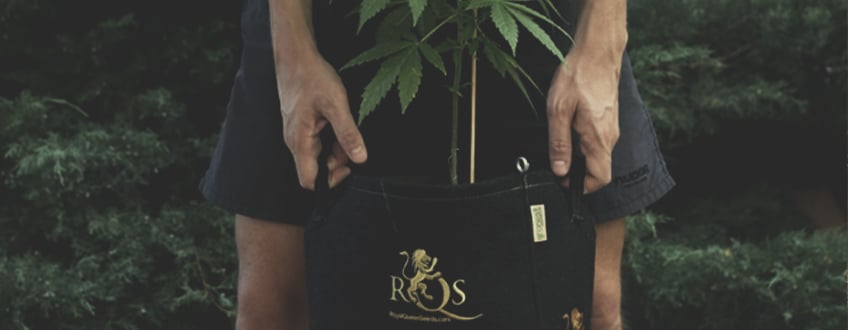

Directions
1. Pick the Right Time
For the best results, move your plants outdoors just after the spring equinox when daylight hours are at their longest.
2. Monitor Daylight Hours
If it's well past the spring equinox, monitor the number of daylight hours in your area by checking the time the sun typically rises and sets. Timeanddate.com tracks the sunrise and set times in various places around the globe. Don’t move your plants outdoors if they’ll get less than 14 hours of daylight.
3. Prepare Your Plants
Familiarise your indoor plants with the new photoperiod they’ll get outdoors by gradually driving down their light hours indoors on a daily basis for 1–2 weeks. Move your plants outdoors once they’re on a similar indoor light cycle as they’ll be getting outdoors.
Scenario 2: How to Bring Indoor Plants Outdoors to Flower
When bringing your indoor plants outdoors to flower, you’ll want to make sure you expose them to sufficient darkness. At the same time, you’ll want to avoid exposing your plants to drastic light cycle changes.
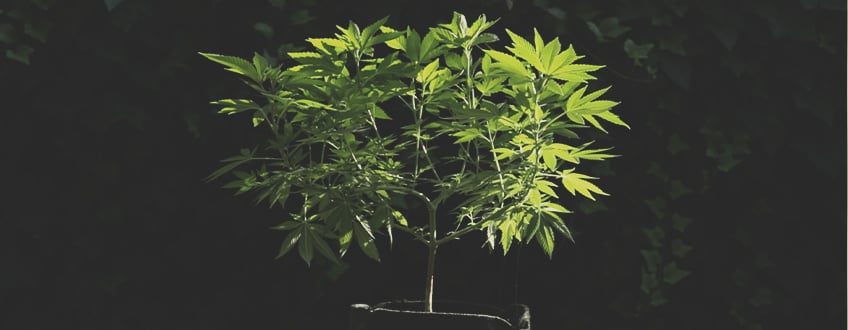
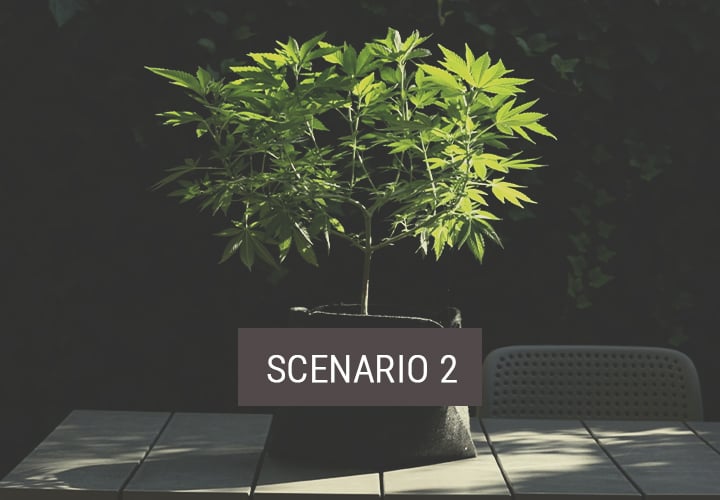
Directions
1. Monitor Daylight
Monitor the daylight hours in your area. Remember that photoperiod cannabis plants flower naturally once they receive 12–14 daylights hours.
2. Prepare Plants for a New Light Cycle
Gradually familiarise your indoor plants to the amount of light they’ll receive outside by gradually decreasing their daylight hours for at least 1 week. Remember that your plants may start flowering during this period.
3. Move Your Plants Outdoors
Move your plants outdoors once the number of light hours they’re getting indoors matches those they’ll be getting outdoors.
4. Ensure the Correct Amount of Daylight Hours
Never move flowering plants outdoors if the daylight hours in your area are higher than those in your grow room. This will cause your flowering strains to revert back to their vegetative phase.
Scenario 3: How to Move Cannabis Plants Outdoors Part-Time
Sometimes you’ll only want to move your cannabis plants outdoors for a brief period of time (if you’re making changes to your grow room, for example). If that’s the case, you’ll want to make sure the strong UV rays of the sun don’t shock your plants. Here’s how to give your indoor plants a sunny transition outdoors.
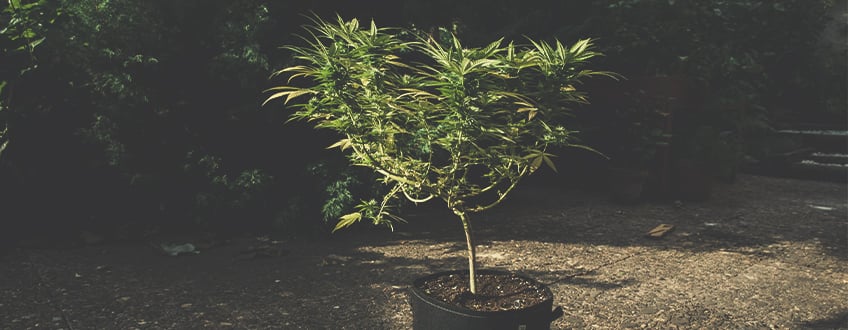
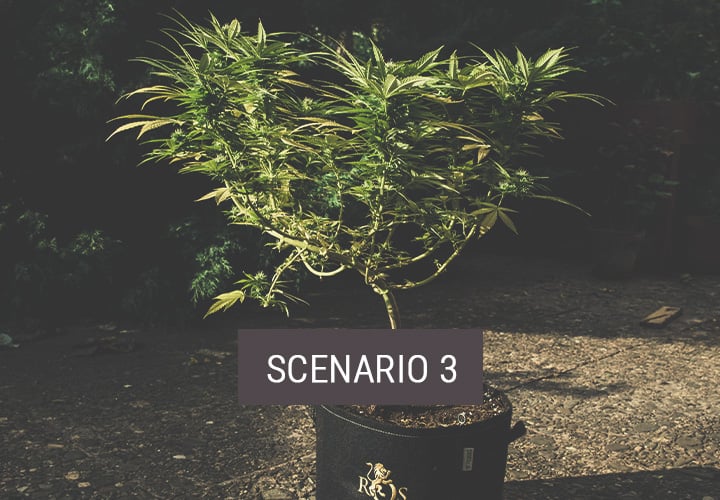
Directions
1. Acclimatise Your Plants
If your plants are young, consider moving them into partial shade for 2–4 days. Keep a close eye on them to ensure they don’t show signs of heat or light stress (such as upward-curling leaves).
2. Slowly Expose Them to More Sun
Over the next five days, gradually introduce your plants to direct sunlight. Start by giving them 2–3 hours on the first day, then gradually move up from there. They should be able to handle 4–6 hours of direct sunlight after one week of acclimatisation.
3. Check on Plants and Maintain as Necessary
Continue checking on your plants to ensure they’re not showing any signs of stress or pests. Also, remember to shield your plants from wind or strong rains (if necessary). Never move plants with pests, fungi, or bacterial pathogens back into your grow room to avoid spreading disease or plagues.
4. Keep Consistent
Make sure to always give your plants the same amount of light hours to avoid stressing them.
What Are the Risks of Moving Indoor Cannabis Plants Outside?
If you follow the tips outlined above, you shouldn’t have any issues moving your plants outdoors, be it to continue vegging, start flowering, or simply soak up some sunlight. Keep in mind, however, that carelessly moving your plants indoors or outdoors does carry the following risks:
🥀 Immature flowering: If you move photoperiod indoor plants outdoors into sufficiently short daylight hours, they will start flowering.
🍃 Reverting back to veg: Flowering photoperiod strains can revert back to their vegetative state (a process known as vegetative regeneration) if daylight hours are long enough. This is a long, stressful process that produces deformed foliage.
🕷️ Pests and plagues: There’s no fail-proof way to protect your plants against pests and pathogens outdoors. When you grow cannabis outdoors, pests and plagues are something you very well might run into.
💨 Environmental stressors: Strong winds, high temperatures, UV rays, and thunderstorms are all natural environmental stressors that your plants might face outdoors. Remember to keep a close eye on the weather forecast.
Learn the best tips for healthy cannabis care with our Grow Guide!
Free RQS
Grow Guide!

The Key to Safely Moving Your Indoor Cannabis Plants Outdoors
As long as you follow the steps outlined in this post, you should be able to move your cannabis plants around pretty freely. Had positive or negative experiences moving cannabis plants indoors or outdoors? Share them in the comments below.


























